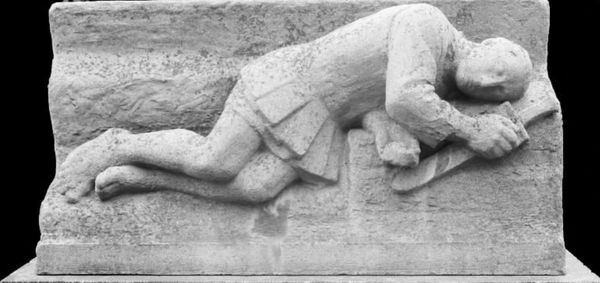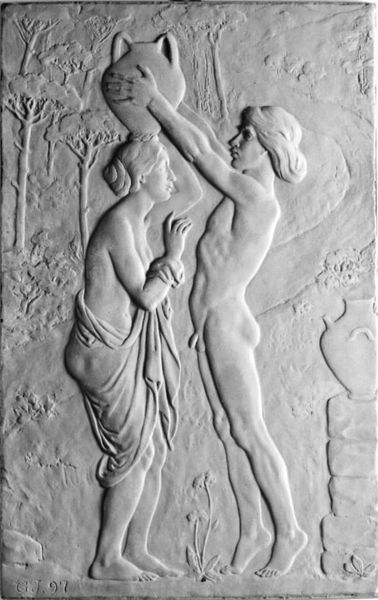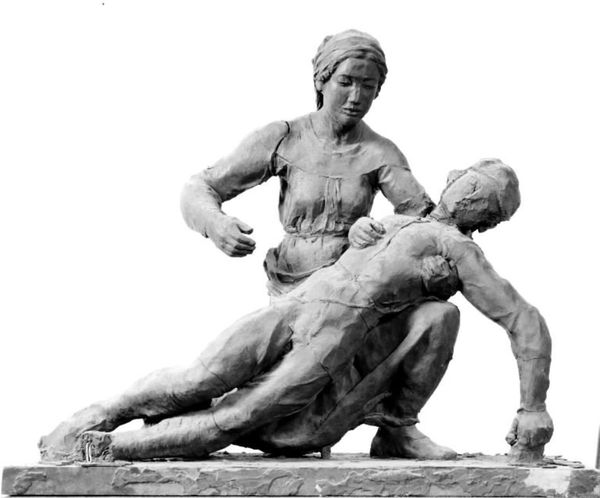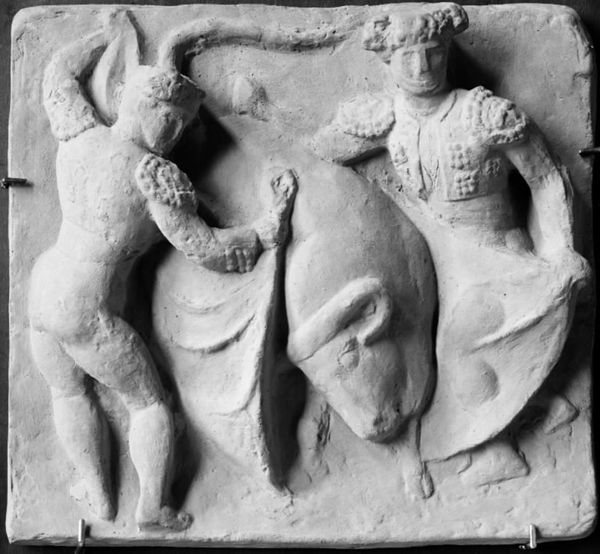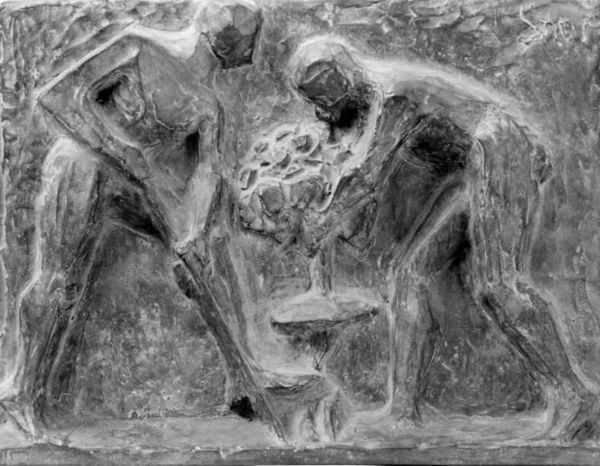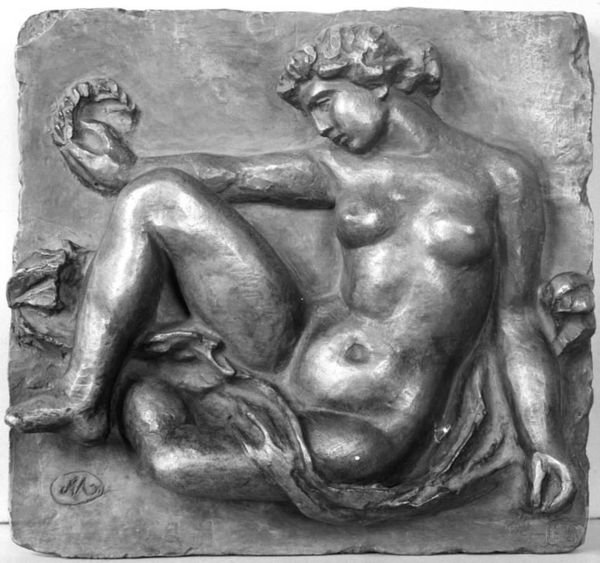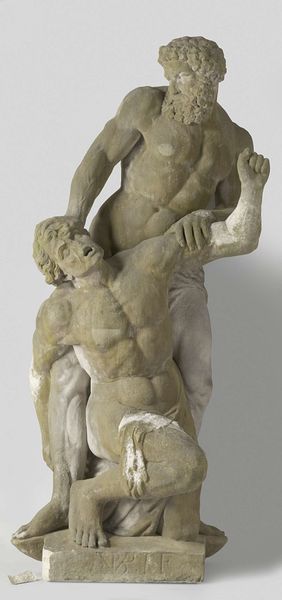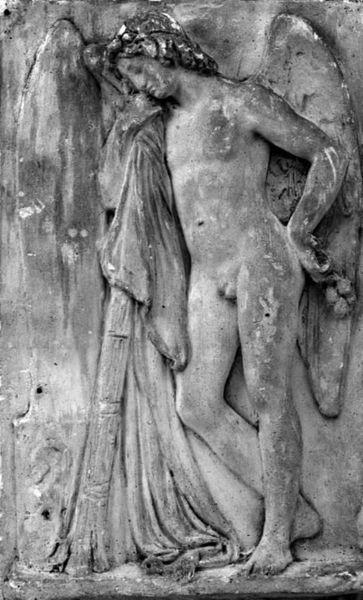
carving, relief, sculpture, wood
#
carving
#
sculpture
#
relief
#
landscape
#
figuration
#
sculpture
#
neo-romanticism
#
wood
#
academic-art
Dimensions: 70.4 cm (height) x 97.8 cm (width) x 10 cm (depth) (Netto)
Curator: At first glance, there's an austere, almost primitive quality to this relief. Stark, really. Editor: We're looking at "Spring. Two Nude Men Planting a Tree" by Niels Larsen Stevns, crafted between 1938 and 1939. It's a wood carving, currently residing at the SMK – the National Gallery of Denmark. And I’d agree with the stark assessment, although, framed in the pre-war period, its emphasis on physical labour seems like a pointed return to foundational, perhaps nationalistic, themes. Curator: Ah, yes, I feel the “Neo-Romanticism” humming there—a certain turning back, inward. But even with all that cultural baggage, the carving has this yearning. Two almost faceless figures planting what feels like, well, not just a tree, but a hope. What’s that old saying, that the best time to plant a tree was twenty years ago, and the next best time is now? Editor: Exactly. There's an almost utopian gesture being made amidst a Europe on the brink of devastation. Think of the cultural movement of ‘Blut und Boden’ from that time. These hyper-masculine figures working the land; it evokes anxieties. Though it does somewhat depart from that ideology by suggesting harmony in collective labor. Curator: Harmony yes, but there is also an awkwardness there, you know? I struggle to name it... like the men aren't entirely at peace, perhaps unsure with the hope they sow. Look at how roughly rendered their faces are, all deep shadows... Are they really content with labor? Editor: Absolutely. The academic style also works to create that sense of timelessness – this could be any "spring," any time of rebirth. Except it's 1938. The looming war makes any image of pastoral labor politically charged. The material, the rough carving itself, reminds us of folk art, an aesthetic seemingly unspoiled by modernity. But is such simplicity really possible, or even desirable, considering the historical context? Curator: So much packed into a simple scene. Perhaps it isn’t peace at all; just… expectation mixed with a touch of dread. A quiet foreboding beneath the act of creation. Editor: It makes one ponder the true price of peace and the complexities of interpreting symbols of renewal during periods of impending upheaval. This carving invites us to examine not just what's planted in the soil, but what's brewing in the societal landscape.
Comments
No comments
Be the first to comment and join the conversation on the ultimate creative platform.


